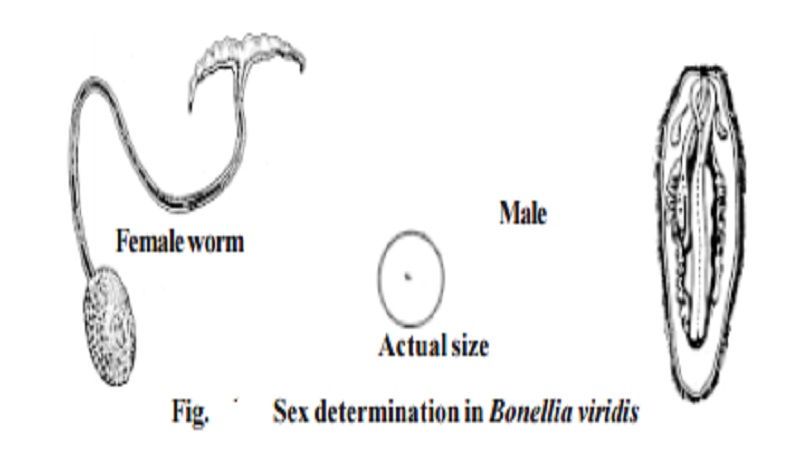Chapter: BIOLOGY (ZOOLOGY) Standard XI first year 11th text book Assignment topics question and answer Explanation Definition
Male haploidy or Haplo-diploidy mechanism

Male haploidy or Haplo-diploidy mechanism.
This mechanism is also known as arrhenotokus parthenogen-esis.
It is a common mechanism in several insects such as ants, bees and wasps. In
these insects, fertilized eggs develop into diploid females and unfer-tilized
egg into haploid males.
In a honey bee colony a queen bee can lay two types of eggs.
They are the fertilized and unfertilized eggs. It happens by controlling the
sphincter in the sperm receptacle of the female. The diploid female zygote can
develop either into a queen or a sterile female worker bee. The sterile nature
of the worker bee is due to poor nourishment. The haploid zygote de-velops into
a male. This mechanism of sex determination helps to maintain the polymorphic
nature in a honey bee colony.
Apart from genetical systems, the sexuality can also be
con-trolled by various factors such as metabolism, environment and hormones.
Sex in Bonellia
Bonellia viridis is a marine worm. Its sex determination was studied
by F. Baltzer(1935). The adult female worm is about 2.5 cm long. It
has a well defined anatomical organization.
The male is very small and microscopic. Its body organs are
rudimentary. The males normally live as parasites attached to females. All
larvae of Bonellia are genetically similar. However a larva
settling on the proboscis of an adult female becomes a male individual. If a
larva develops in isolation (ie., in the absence of a female) it develops into
female. If a develop-ing male is detached from the proboscis of female, it
becomes an intersex. From these observations it could be inferred that the
proboscis of adult female secretes some hormone like substance and that
substance suppresses female-ness and induces maleness in the larvae which
remains attached.
Related Topics